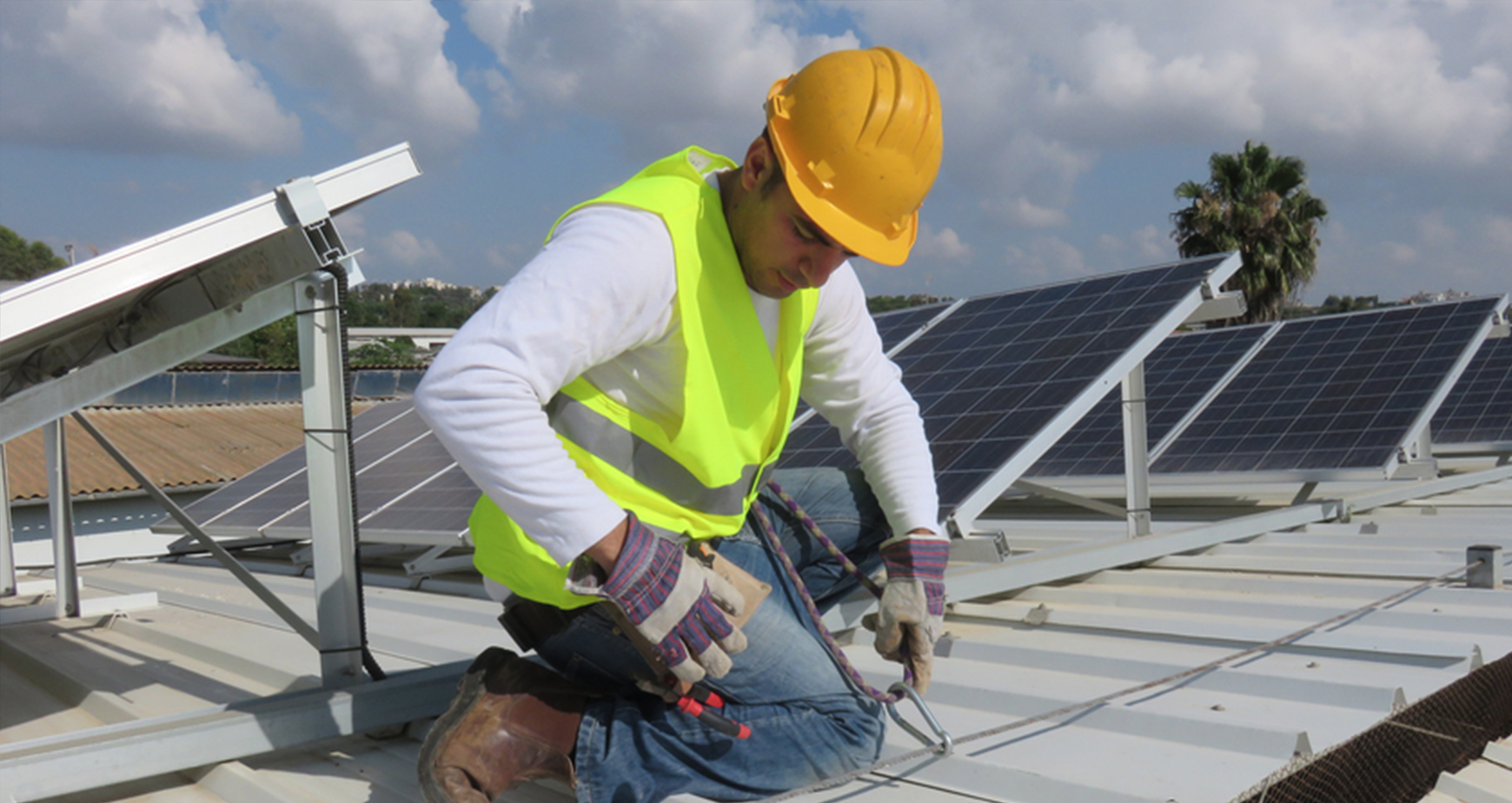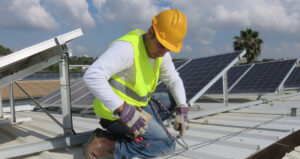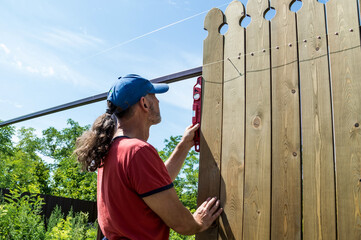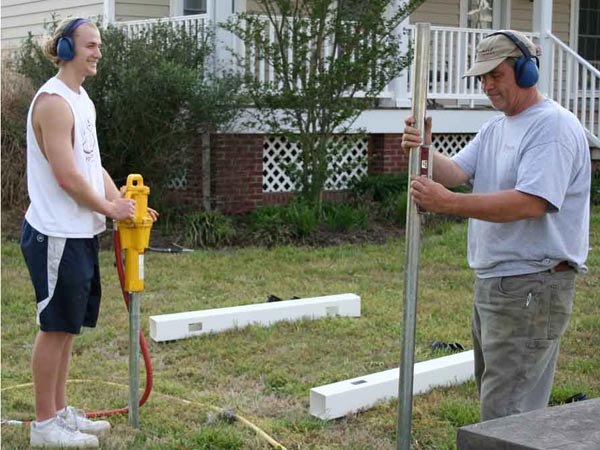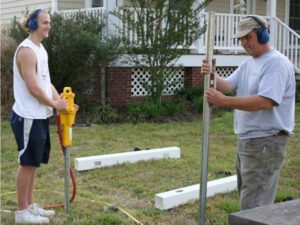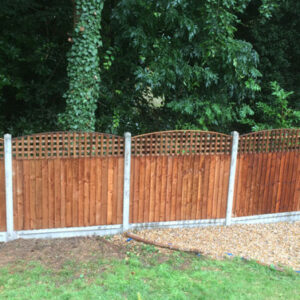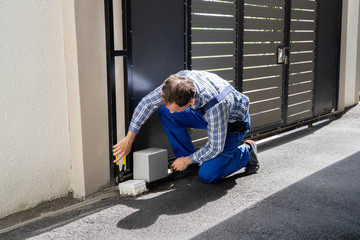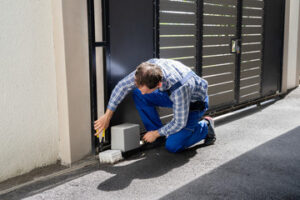A fence is a great way to enhance the privacy of your property and add curb appeal. It can also improve security and deter burglars.
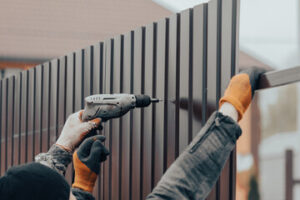
Before beginning the project, be sure to locate any underground utility lines. This will prevent you from damaging them and incurring costly fines.
You’ll also want to consult your neighbors if you live in a neighborhood with an HOA and adhere to any guidelines or restrictions regarding the style and materials of your fence.
One of the first things that a homeowner has to do when they are thinking about getting a fence installed is to choose the right style for their home. This is a very important decision as it can influence everything from the cost of the fence to how much curb appeal it adds to your home.
To help you make the right choice, start by taking a look at the homes in your neighborhood. Take note of the type and height of their fencing and how they match up with the architectural style of their homes. You may also want to talk with your neighbors about their fences as well. They can give you some great ideas for your own property!
You can also check out local fence companies in your area and see what types of fences they have on display. Often, they have samples of different styles and colors that you can look at to get an idea of what might work best for your home. It is a good idea to ask about HOA rules and guidelines as well, as these will likely have some effect on the type and height of fence you are allowed to build on your property.
Once you have an idea of the type of fence that might work for your home, it’s time to decide on a color. Many people prefer to go with a fence color that matches their house, but you can also go for something more bold. For example, a black aluminum fence works well with brick or stone houses. Likewise, a white wood fence is a beautiful complement to any type of home.
Another factor that can help you decide on a fence color is the landscape of your home. If you have spectacular landscaping that you are very proud of, then it might be a good idea to consider an understated fence option so that your landscape can shine. Many people also like to match their fence color with the trim and window shutters of their home, so that the overall appearance is cohesive and appealing.
Choosing a Fence Material
A fence is a great way to protect your property and add curb appeal. It also provides security and offers privacy, and it can help reduce noise from neighbors and local traffic. A fence can also be used to contain pets, children and other people who might wander off the property. There are many different types of fences, including wood, chain-link, aluminum and wrought iron. Each type of fencing material has its own advantages and disadvantages. Before selecting a fence, consider your goals and your budget. Then, find a fence that meets your needs and complements your home’s design.
Once you’ve narrowed down the type of fence that suits your home, you must select a material for the fence. Wood fences are popular, and they can be built from a variety of materials, such as redwood or cedar. They are also available in a range of heights, from six to eight feet. A fence constructed of treated wood is a good investment because it will last longer than untreated wood and resist the effects of sun exposure.
If you choose a wooden fence, look for planks that are straight and evenly spaced. Check for warps and dents, and make sure the planks are properly sealed or painted. The fence posts should be at least four feet in the ground, and they should be pressure-treated to resist rot and insects.
Another popular option for homeowners is a masonry fence, which can be made from brick, stone or stucco. Masonry fences provide a stately appearance to a property, and they can be incorporated with other fence types to adjust the design or reduce costs. They are relatively low maintenance, but they can deteriorate over time and require repair.
Before choosing a fencing material, be sure to calculate your total cost and factor in the amount of time you’re willing to spend maintaining it. Then, take a closer look at each type of fencing to determine its suitability for your climate and environment. For example, if you live in an area with cold winters and hot summers, consider a vinyl fence. This material can withstand extreme weather conditions, including strong winds and precipitation.
Obtaining a Building Permit
As with any project, it is important to check and double-check whether or not a building permit is required. Fences are no exception and although it is not always the case, it is a good idea to find out ahead of time before beginning construction. Oftentimes, local governments have websites that will provide this information, but if not, the best thing to do is call the city inspector or drop by at city hall. Whether or not the building department has specific requirements about where, how high or what type of fence you can build will be based on zoning and codes in your area.
For instance, your property may be zoned to allow only a certain height of privacy fence or it may be necessary to obtain written consent from neighbors. In addition, some towns have restrictions about how close you can build a fence to your property line, particularly if you are on a corner lot.
Once you have all the information together, fill out a permit application. You will likely have to supply sketches, plans, photos and a fee with your application. Some cities will take several weeks to review and issue your permit, so it is a good idea to start the process as early as possible.
During the review, a building official will look at all of your information and determine if it meets local standards. If there are any problems, they will suggest ways to fix them. Once the permit is issued, you will be able to begin construction. Depending on the city, your permit will usually be valid for a set amount of time, which is why it is best to begin construction right away.
If you do not feel comfortable dealing with this aspect of the fence installation, it is always a good idea to hire a professional home improvement contractor that has a valid licensed Home Improvement Contractor (HIC) license. This will ensure that all work is performed to code, and that any faulty workmanship will be rectified before your permit expires. In addition, a HIC licensed professional will be able to handle the permit process for you, which saves you time and stress.
Getting Started
If you have a lot of time on your hands and are familiar with woodworking or construction, and can find a friend or family member to help, installing a fence yourself may be a project that suits you. However, it is important to understand that a fence takes much more than the simple purchase of materials. It must be built correctly to last, and the complexities of working with uneven ground or navigating landscaping plantings can make it a more difficult job than you might expect.
The first step in getting started is to clear out the area where the new fence will be installed. Make sure the crew will have easy access to the area and remove any landscape items that are in the way, such as fallen tree limbs or large rocks. Having an open space will allow the crew to work more efficiently and prevent valuable items, such as lawn ornaments or landscaping features, from becoming damaged during the construction process.
Next, the fence posts must be installed. It is important to dig the post holes properly and seat them securely. The size of the hole should be double the diameter of the post and about a third of its height, so it can support the weight of the structure.
After the posts are in place, the next step is to install the panels or pickets that will define the fence’s look. There are several options for this, including using pre-fabricated fence panels, which can make the process quicker and simpler, or constructing a traditional white picket fence with individual pieces.
When you have the fence completed, it’s a good idea to apply a sealer or stain to protect it from weathering and damage over time. The product you use will depend on the type of fence and the environment in which it will be located, so be sure to follow the manufacturer’s instructions carefully.
If you have a shared property line with neighbors, it is a good idea to alert them of your plan before starting the construction so that they can prepare themselves and keep their pets and children inside during the installation process. This also gives them an opportunity to request that they move anything in their yard that they would like protected from the fence.



